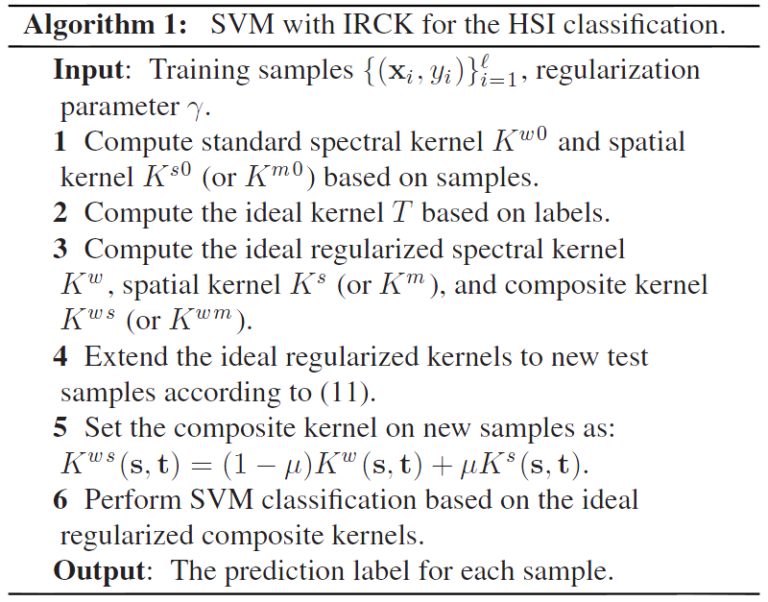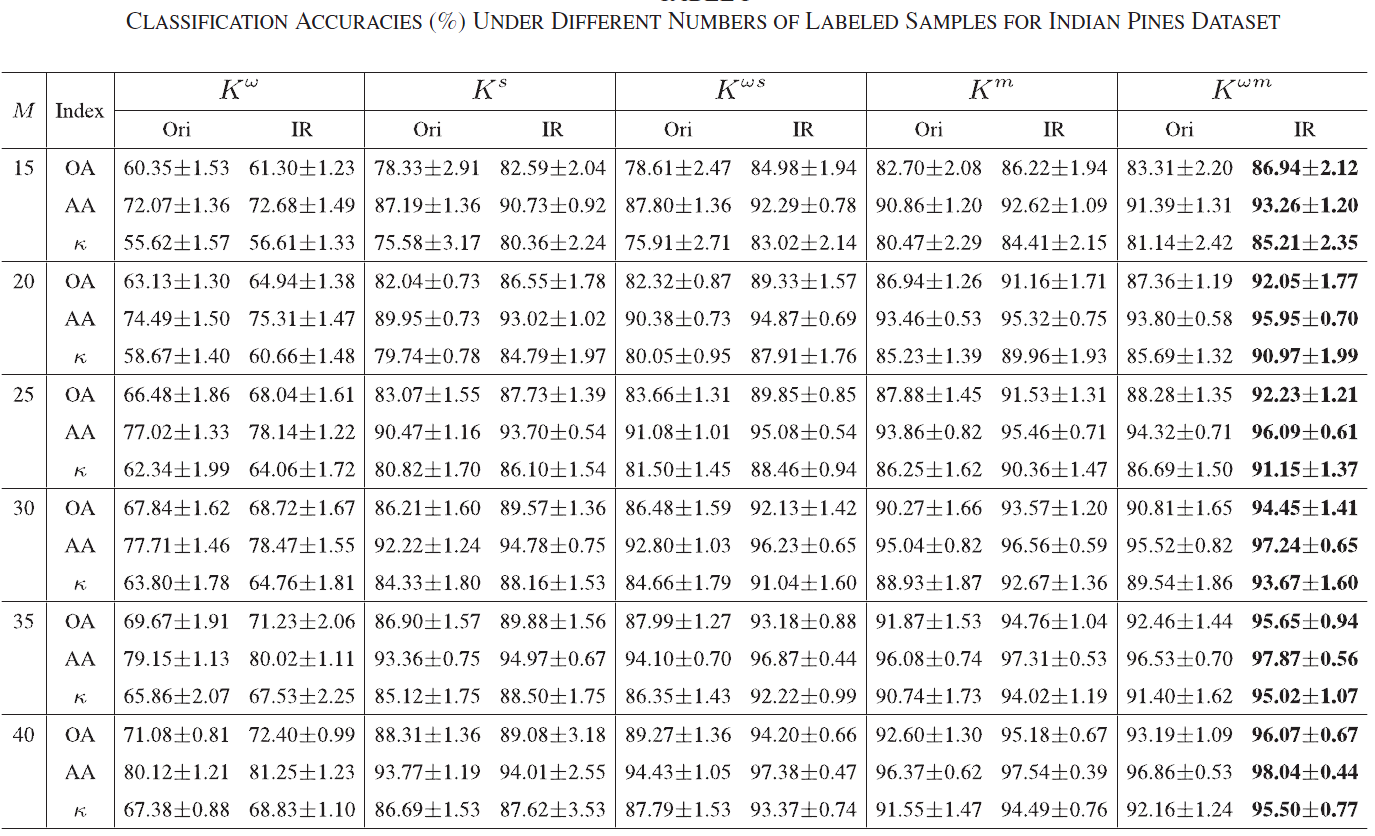Ideal Regularized Composite Kernel for Hyperspectral Image Classification
Project summary:
Almost all of the aforementioned kernel-based methods learn the standard kernels from the samples alone (i.e., spectral and spatial samples, or supervised and unsupervised samples), without considering the labels of a dataset. In fact, the label information can be used for the kernel learning and to refine the standard kernels. Exploiting the labels explicitly, an ideal kernel is constructed. It assigns the sample pair with a kernel value 1 if they belong to the same class, and a kernel value 0 if they belong to different classes. The ideal kernel incorporates label similarities, and is usually used for kernel parameter selection [26]. Based on the ideal kernel, an ideal regularization strategy is recently proposed to learn a data dependent kernel from the labels and shows good performance.
In this paper, we propose an ideal regularized (IR) composite kernel (IRCK) framework for spatial–spectral classification of HSIs. In IRCK, we consider spectral and spatial kernels as initial standard kernels, and employ an ideal regularization strategy to refine the initial kernels by incorporating the labels into standard spectral and spatial kernels. Finally, the regularized spatial and spectral kernels are combined to form a CK for the HIS classification.
 |
Experimental results:
 |
Reference:
Jiangtao Peng, Hong Chen, Yicong Zhou, and Luoqing Li, “Ideal Regularized Composite Kernel for Hyperspectral Image Classification,” IEEE Journal of Selected Topics in Applied Earth Observations and Remote Sensing (JSTARS), in press, 2016.